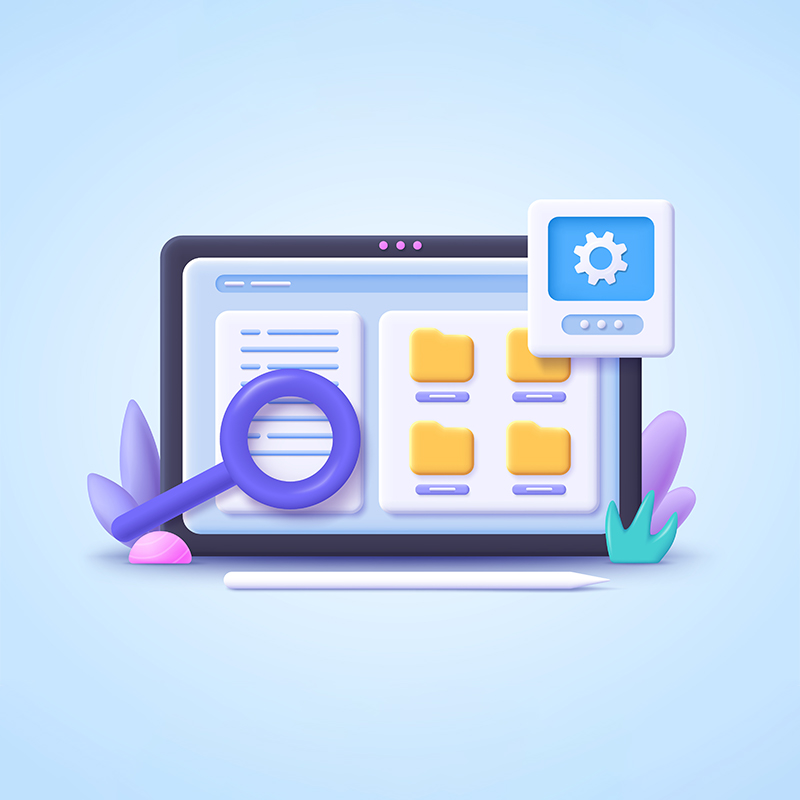eCommerce is the term used to describe any online activity involving the purchase and sale of goods and services. eCommerce has simplified shopping; anybody with Internet access can shop online, and thanks to smartphones, you can do so from anywhere in the world, at any time. With 56% of organisations expecting most of their revenue to come from eCommerce within the next three years, it’s never been more important for business owners to consider branching into online sales to maximise growth and revenue.
What is eCommerce?
eCommerce means that consumers can search for and purchase almost anything they might need within minutes, but eCommerce is more than just customers purchasing from businesses. There are four main types of eCommerce:
- B2B
B2B eCommerce refers to any sales transactions that occur between two businesses; the interaction between a product’s makers and the distributors who market the goods for sale to consumers.
- B2C
B2C is the most common type of eCommerce. This refers to any transaction between a business providing a service or products direct to a consumer. For example, a clothing website selling a jacket to a customer.
- C2B
C2B eCommerce is consumer to business transactions where a consumer sells a service or product to a business, for example, a designer selling their services to a business website.
- C2C
C2C eCommerce is consumer to consumer sales, for example, a consumer selling something on eBay to another consumer.
What are the most popular eCommerce platforms?
- Shopify
With over a million stores established on the Shopify platform in less than 15 years, Shopify is the most popular eCommerce platform for companies hoping to get an online store up and operating quickly.
With Shopify, the foundations of your eCommerce site can be built within moments. An onboarding wizard guides you through the process of adding items, changing the layout of your shop, connecting your domain, and setting up payment processing. You can set up, create, and manage your eCommerce store across numerous sales channels, including mobile, online, and social media.
You’re unlikely to get confused with Shopify’s user-friendly web interface, even if you’ve never constructed a website before. Adding products to your site is as easy as clicking two buttons and adding information such as the name and price of your product. Then, simply switch the product’s status to Active, and it’s ready to be sold.
- Wix
Wix is an easy-to-use, free website builder that can be used to host your eCommerce store. Wix is a popular option for smaller, newer businesses, as building a Wix site requires no prior coding skills, and it can be used by beginners.
Wix offers complete creative freedom; there are an extensive number of high-quality templates to suit every kind of business, and you can customise all elements of your webpage. Wix’s intuitive integrated editor offers advanced editing and design features for those looking to create a more complex, refined design for their website. Using their app market, you can easily add online booking or live chat features to your page, and its built-in digital marketing features makes it easy to optimise your website content for SEO.
Wix eCommerce has a quick set up for businesses wanting to get their website off the ground as quickly as possible and allows you to easily manage your inventory and track your sales.
- Squarespace
Squarespace is a great option for online retailers because of the well-designed layouts, powerful inventory system, and useful features such as analytical and promotional tools.
Squarespace’s online shop designs are more limited than competitors such as Wix, but they span a wide range of industries and still allow for customisations. Squarespace is one of the simpler website design platforms, meaning that you could have your eCommerce platform up and running within a few hours.
Another benefit of Squarespace is its value for money. Squarespace allows you to upload and sell an unlimited number of products on any of their eCommerce pricing options, and you can easily upload your products individually or in bulk. Features such as in-house stock management, automatic stock level email alerts, and revenue reporting makes Squarespace one of the most comprehensive eCommerce website builders for a lower price than competitors.
How can eCommerce benefit my business?
There are a wide range of companies that can profit from having their own eCommerce website where they can offer their products or services, from small businesses to large corporations. Consumers are looking beyond the high street to purchase things; they are looking for product diversity and convenience, and the ability to shop from the comfort of their own homes means eCommerce is a flexible alternative for businesses and customers. Here are some of the top reasons that you should be investing your time and budget in eCommerce:
- More flexible than physical retail
Brick-and-mortar stores are only accessible for your customers that live in the vicinity of your store, and it can only be visited during your trading hours. eCommerce is a less restrictive means of trading, as it means that your customers can always access your products at any time of day, even if they live far away from your store, or have difficulty with accessibility. eCommerce is always on, even when your physical business must close for public holidays or evenings.
2. Reduction of overhead costs
For small businesses who can’t afford the overheads involved in owning a physical retail location, eCommerce means they can trade without worrying about paying for rent, wages, and store upkeep. eCommerce requires less investment and capital for new businesses.
3. Faster experience
With eCommerce, customers can locate a suitable item and check out within minutes. Rather than having to set time aside for visiting a particular physical store, the convenience and flexibility of eCommerce means that a customer can think of something they need and find it almost immediately. With options such as next-day-delivery and speedy checkout, eCommerce encourages impulse buying, meaning your customers waste less time in the consideration stage.
4. Better for browsing
eCommerce means there’s no need to worry about visual merchandising, an untidy store, or customers being unable to find what they’re looking for in a sea of products. By designing your online shop for easy navigation, customers should be able to find what they’re looking for faster. Using categorisation, consumers can browse products by specific features. Customers can search for keywords to find related products. Detailed, convincing product descriptions and high-quality photographs and videos mean that your customers can find out more about your products than if they had just picked it up in a shop. If a product is out of stock, customers can click a button to notify them when the product becomes available to purchase.
5. Reach a larger audience
eCommerce can be accessed by anybody with an internet connection, meaning that your online store has unlimited reach potential. With over 75% of people shopping online at least once a month, eCommerce makes it possible for you to reach anybody, in any part of the world. Make sure that your eCommerce site is optimised for mobiles as well as via computer, as 1/3 of all online shopping is conducted through a mobile. Tailor your content to SEO guidelines and utilise social media marketing to expand your reach even further.
6. Reliability
Adding features to your website such as customer testimonials or reviews means that your customers can get social proof that your business provides a reliable service. 70 percent of online consumers look at a product review prior to making a purchase, so maintaining a good reputation online is vital for any eCommerce business and can help you to secure more sales.
7. Personalisation
Personalisation of a website can improve the online purchasing experience for your customers. One of the most significant advantages of running an online business is the ability to develop customised landing pages for different audiences.
Using the information your website gathers about your customers, you can offer personalised recommendations to them whilst they browse your website. Anticipating your customers’ needs can lead to a higher checkout rate and can be used to drive upsells, for example, when they have products in their basket, you could show them similar products that they may also enjoy based on the products they have selected. If you are a local business providing services, by using geo-targeting you can make sure that your products are tailored to your customers’ location.
8. Retargeting
When somebody picks something up in your physical store and then puts it down without purchasing, there’s nothing that you can do to draw them back in. With eCommerce, an efficient pop-up can help you capture email addresses and market to your consumers even after they leave your site. People who add things to their basket but don’t check out or those who browse your website but do not purchase can be retargeted. Send them an email reminding them of the items they have browsed and left behind.
How to start an eCommerce business
If you’ve been trading offline or own a brick-and-mortar business and you’re looking to branch into eCommerce to improve your revenue and find more customers, it can be intimidating when you consider the costs and efforts of beginning an eCommerce site. However, it may be easier than you think; there are a few steps that you can follow that will help you to build the foundations of a successful eCommerce site:
- Assess your business
Before you begin building a website, have a vision in mind for your business. What are you hoping to achieve by entering eCommerce? What are you offering your customers, and how will eCommerce enhance your trading? Integrating eCommerce into your business plan can improve revenue streams and lead generation, so it’s a good idea to set some SMART goals for your site so that you can see exactly how eCommerce is working for your business.
Create a plan of action and a timeline for your growth goals. Figure out what you may need to run a successful eCommerce business.
2. Build your website
Consider what you’re going to be offering and think about how you would like to appear to your customers and a wider online audience. What do you want consumers to see when they come across your business? How are you going to draw in new customers? Come up with a design plan and consider what services you need to outsource.
Whilst it can be simple to set up a website using website building platforms such as Shopify or Wix, to build a great website, you may need some additional help. Are you going to hire copywriters, digital designers, or web developers?
Set up your website and add your products so that you can see what your customers will see when they enter your webpage.
3. Focus on your marketing efforts
Expanding your physical business into the online world may require a change in tactic for your marketing strategy. How are you going to find new potential customers? How are you going to make sure your current customers know that they can find you online? Reconsider your target audience and make sure that you choose a marketing channel that will likely reach them.
Once your eCommerce site is up and running, nurture your customers through email marketing. Especially useful for small businesses, email marketing is an inexpensive way of reaching your audience that can yield a high ROI. You can contact your consumers with convenient and personalised messages that may inspire them to visit your online store.
To reach brand new potential customers, focus on improving your SEO tactics. Improve your site traffic by implementing technical SEO and optimise any content such as blogs or product descriptions to make sure your business ranks higher on search engines. Make sure to do your keyword research so you know what your consumers are looking for and write your content with your specific buyer personas in mind. Employing a marketing agency to help you with your digital marketing strategy can alleviate the stress of trying to juggle all the different elements of running an online business, so find out the benefits of using a marketing agency and consider whether this could improve your business.
4. Interact with your customers
Treat your online customers the same way that you would treat customers if you were face-to-face. Communicating with your customers is a perfect way to improve your reputation; customers want to purchase from companies that they can trust, and they may avoid your business if your eCommerce website content sounds impersonal.
Social media is one of the simplest methods to communicate with your customers. Whilst many companies have a social media presence, make yours stand out by creating interactive and engaging posts. Focus on building genuine relationships with your customers and reply to their comments and messages. If you are new to eCommerce, you want to ensure that potential customers know that they can trust you. Social proof is important for many consumers, so encourage your customers to leave reviews.
Adding contact features to your website is critical. If your customers have questions about your products or services, or need a hand selecting or returning items, having a live chat or contact forms will help your customers to feel heard. Dismantle the barriers between you and your customers; you want their online shopping experience to be as seamless as it is in real life.
Starting an internet business is easier than ever thanks to the amount of eCommerce platforms that are available today and implementing digital marketing strategies mean that you can find brand new customers from all over the world. eCommerce is a fantastic way to facilitate sales and will allow your customers to purchase your products with minimal hassle.
If you’d like more information on how a marketing agency can help grow your business online, then contact us today.




